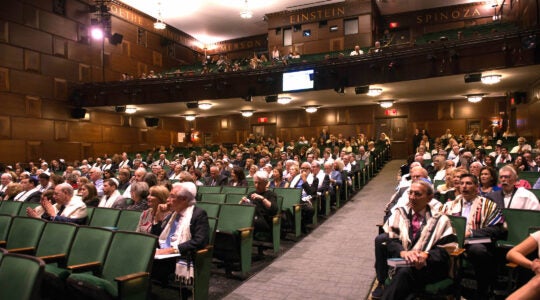Throwing out the lumber used for the stage at the Woodstock music festival was like your mom throwing out old baseball cards, Steve Gold tells us. Some people get it, some people don’t. Gold got it (the stage, that is) and now he’s selling it, cut into pieces, souvenirs of a dream.
In September 1969, a few weeks after Woodstock, when over 400,000 young people gathered on Max Yasgur’s farm in the heart of the Jewish Catskills to see more than 30 of the greatest performers in rock and folk history, Gold, then a boy of 15 who had been at the festival, was visiting his girlfriend Robin at the bungalow colony in Woodbourne, owned by her dad. The father asked Gold to help him unload some lumber that his friend Yasgur had no use for.
What was Yasgur going to do with 8,000 square feet of wood sitting in the hay field? Gold couldn’t believe what he was hearing.
Back in August, those planks were where Janis Joplin and her Kozmic Blues Band performed at 2 in the morning, loud enough to be heard miles away; where the Grateful Dead played until torrential rains almost electrocuted them in the middle of “Turn On Your Love Light”; where it was announced that the New York State Highway was closed by kids coming in their Volkswagen mini-buses.
Gold had seen Jimi Hendrix stand on that wood as the sun rose on the festival’s farewell performance Monday morning. But really, young Gold agreed, what the heck was Yasgur supposed to do with a big slab of wood in the middle of a dairy farm?
Fifty years later, Gold and two partners, Dave Marks and Randy Garcia, figured out that they could make some money, and make a lot of people happy, by selling that old Woodstock stage.
Gold drove back to the Woodbourne colony to have a look, and saw that “magical focal point of Woodstock, the hallowed stage,” albeit in its forsaken incarnation. There it was, one side with faded white paint, one side left raw.
Gold said, “We removed several panels to look for stage markings,” identifiable from the Woodstock movie and hundreds of photos. The giveaway was the psychedelic drawings and the Weyerhaeuser lumber company logos that were never covered over. The partners are now selling stage pieces through their company, Peace of Woodstock Stage (peaceofwoodstockstage.com).
Robin’s family long ago had sold the colony, which used the stage as a handball-paddleball court, to a charedi group; but the charedi summer crowd had about as much use for a handball-paddleball court as Yasgur’s farm had for the stage. The court became overgrown with weeds. Gold spoke to the colony’s current owners about buying the wooden wall that the colony thought to be useless. Without Gold wanting to say the exact price, suffice it to say that the old stage cost him about as much as a few packs of baseball cards — the price of a Wilmer Flores, not a Willie Mays.
Now “Peace of Woodstock” has been slicing and dicing the old stage into squares, cubes and amulets, to be sold to collectors who know a dream when they see it. The dream costs $499 for a nine-square piece of stage; $299 for a four-inch souvenir; or $19.69 for a two-ounce bottle of sawdust that is being marketed as “stardust,” evoking Joni Mitchell’s “Woodstock” lyrics, “We are stardust, we are golden.”
Gold says that some of the “stardust” profits will go to various charities.
The New York Jewish Week brings you the stories behind the headlines, keeping you connected to Jewish life in New York. Help sustain the reporting you trust by donating today.




